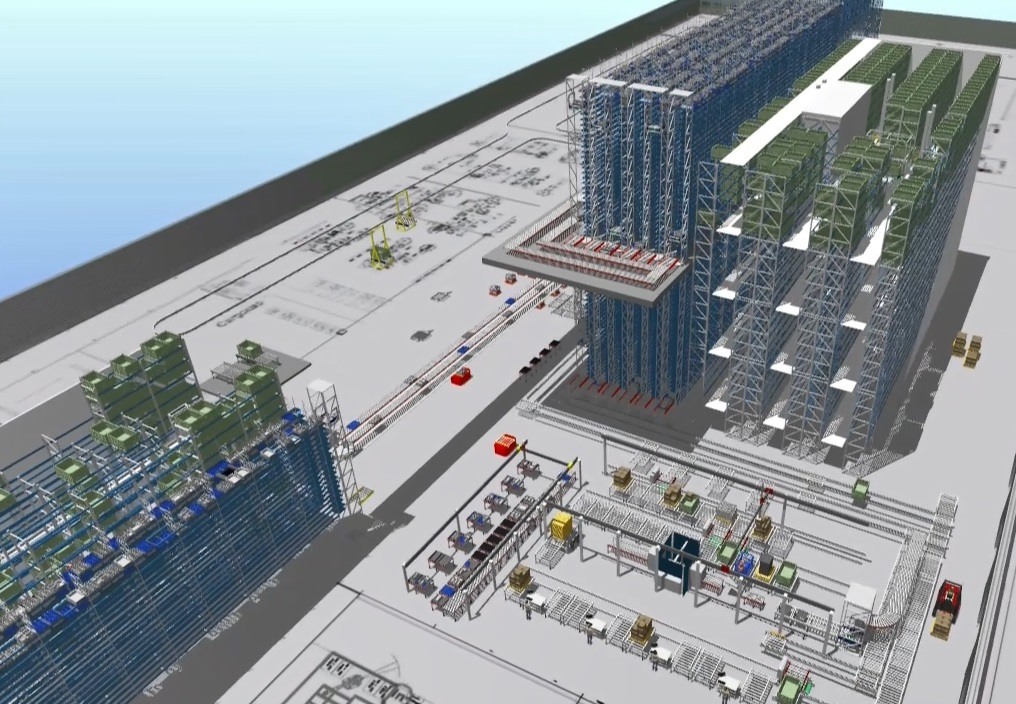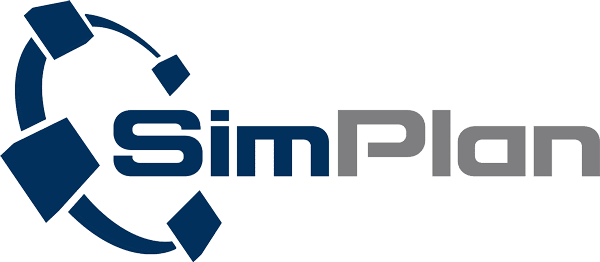
Production logistics
The focus of simulating production logistics is on the following processes:
In-house transportation
In-house transportation to supply the production line with the necessary materials and transport of semi-finished or finished products between production areas as well as to dispatch areas or the dispatch warehouse: This transportation can be carried out by various means of transport, e.g. forklift trucks, trains, or driverless transport systems (AGV).
The goal of the simulation is an ideal interpretation of transportation. This calls for a solution which provides an economic interpretation of transport resources as well as taking stock and tape files into consideration ensuring 100% reliability of delivery. For this purpose, the best route guidance, a balanced distribution of the transport loads, as well as the required tape stocks for decoupling are determined in the simulation. Different alternatives can be evaluated and compared.
Storage
Storage of both purchased and semi-finished products as well as finished products:
In the simulation, the required storage capacity and storage / retrieval capacity as well as the appropriate technical design can be determined.
For example, classic high-bay storage units with rack-mounted control units can be compared with shuttle solutions and their effects on tape stocks and in-house transport can be determined. In the simulation model, various storage strategies such as the distribution of part types of large, medium and small parts as well as fast and slow rotors can be evaluated (more information about distribution logistics).
Service processes
Service processes such as repackaging, order-picking, consolidating, packing or loading / unloading: The service processes can be designed with regard to the throughput and required resources with the aid of the simulation. In the picking process in particular, the processes are examined and optimized in detail, e.g. the arrangement of parts in a supermarket or the bundling of orders.
